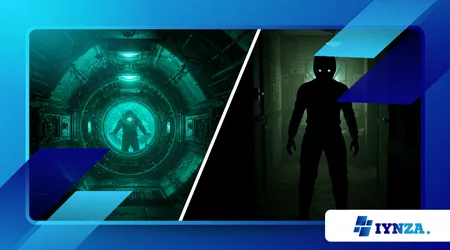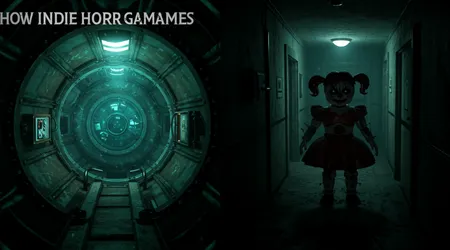How Indie Horror Games Are Redefining Fear

The genre of horror gaming has fundamentally shifted, moving away from big-budget, action-heavy blockbusters. Today, the most profound psychological dread and genuine terror are born from small, ambitious studios.
Anúncios
How Indie Horror Games Are Redefining Fear is a critical examination of how limited resources foster creative brilliance, pushing boundaries that AAA titles often shy away from.
These smaller teams prioritize atmosphere, helplessness, and deeply personal narratives over expensive jump scares and combat mechanics.
This creative revolution, fueled by accessible development tools and digital distribution platforms, is reconnecting horror with its roots in vulnerability and existential dread.
We will dissect the design principles these indie developers employ, proving that genuine fear is a matter of psychological design, not graphical fidelity.
Their influence, often spread virally through streaming culture, is fundamentally altering the expectations of the entire genre.
Minimalism as a Weapon: The Power of Vulnerability
The most effective indie horror games thrive on stripping the player of control and firepower, forcing a primal response to danger. This deliberate design choice amplifies the feeling of vulnerability, a core element of dread.
The Helpless Protagonist Archetype
Indie horror protagonists are rarely military veterans or highly trained survivors. They are often ordinary people journalists, children, or simple travelers who possess no means of self-defense. This lack of agency is the central mechanical constraint.
Games like Amnesia: The Dark Descent famously removed combat entirely. Instead, the player’s primary interaction was running and hiding.
This fundamental mechanic instantly shifts the power dynamic, making every encounter a source of high-stakes panic. The emphasis on hiding, rather than fighting, generates sustained tension.
Another powerful example is the fragility of the avatar. In many indie titles, even a single touch from the monster means instant death, forcing players to prioritize evasion above all else. This focus on vulnerability explains How Indie Horror Games Are Redefining Fear through mechanical constraints.
++ Best retro indie games for beginners
Resource Depletion and Psychological Stress
Limited resources are used not just for challenge, but as a source of mounting psychological stress. The flashlight battery is always dying, matches are scarce, and sanity meters continuously drop.
The genius here lies in making the player choose between immediate safety and long-term sustainability. Do you waste your last battery pack to illuminate the next corridor, or save it for a potentially more critical encounter?
This constant, low-grade stress erodes the player’s confidence, making the eventual threat feel disproportionately massive. This subtle scarcity is the foundation of the atmosphere.

Breaking the Fourth Wall: Unsettling Meta-Narratives
Indie developers often utilize creative freedom to experiment with narrative structures, blurring the lines between the game world and the player’s reality. This meta-narrative approach is highly effective in generating unease.
The Corrupted Interface and The Unreliable Narrator
Many indie games directly manipulate the game’s interface (UI) or the player’s perception to create doubt. This technique shatters the safety barrier inherent in knowing “it’s just a game.”
Also read: Exploring the Revival: Modern Takes on Classic 80s Vectrex Console
Playing with the Player’s Trust
Games like Doki Doki Literature Club! famously corrupt their own files and manipulate the in-game menus. When the game appears to “glitch” or directly address the player by their real-world username, it triggers a legitimate sense of confusion and intrusion. The violation of the familiar interface is deeply unsettling.
This meta-narrative trick forces the player to question their environment, a key element in understanding How Indie Horror Games Are Redefining Fear. The fear stems not just from the monster, but from the sudden, terrifying realization that the rules of the world are changing.
Analogy: If AAA horror is a haunted house with predictable jump scares, indie horror is a puzzle box that suddenly moves the entrance door while you’re inside. You start doubting the box itself.
Read more: The Best Retro RPGs Worth Revisiting
Direct Commentary on Gaming Culture
Some indie horror utilizes the medium to critique or comment on gaming itself. By exploiting familiar genre tropes (such as finding a key or solving a simple puzzle), they establish patterns only to viciously subvert them.
This subversion serves as a psychological trick. The player expects a familiar outcome but is met with a disturbing, often non-sensical conclusion. The game leverages the player’s learned knowledge against them, making the environment unpredictable and therefore terrifying.
Aesthetics of Dread: Low Fidelity, High Terror
Indie games often cannot compete with the photorealism of AAA studios, but they turn this limitation into a stylistic advantage. The use of low-fidelity graphics, found footage, and jarring aesthetics proves that atmosphere trumps polygon counts.
The Found Footage Phenomenon
The found footage style, popularized by games like Outlast and numerous viral micro-indies, immediately immerses the player in a state of gritty realism. The deliberately low texture quality, screen distortion, and narrow field of view mimic a subjective experience.
This aesthetic choice enhances the feeling of reality. The imperfect, grainy visuals make the horror feel less like a polished movie and more like a visceral, immediate incident. The intentional limitations on vision (only seeing through a camera lens) restrict the information the player receives, maximizing anxiety.
Embracing the Lo-Fi, Retro-Aesthetic
Many successful indie horror games utilize distinct retro or low-poly aesthetics (e.g., PS1 or VHS-era visuals). This choice taps into a specific Nostalgia of Dread. The blocky, abstract nature of the environments forces the player’s mind to fill in the missing details, which is often far scarier than any perfectly rendered monster.
The lo-fi look provides a sense of detachment from modern realism, giving the developers freedom to introduce genuinely surreal and bizarre concepts. This creative license allows them to prioritize mood over detail, fully explaining How Indie Horror Games Are Redefining Fear. The budget constraint becomes an artistic signature.
Example: The Baby in Yellow uses simple, almost cartoonish graphics, yet the subject matter and unexpected AI behavior make the experience profoundly unsettling. The terror comes from the unnatural behavior, not the texture resolution.
The Market Impact: Viral Spread and Creative Dominance
Indie horror’s success is intrinsically linked to modern digital culture, particularly streaming platforms. Their low price points and highly engaging, reaction-driven content create a perfect storm for viral marketing.
The Streamer Economy
Indie horror games are tailor-made for streaming. The combination of jump scares, palpable tension, and short, manageable playtimes makes them ideal for content creation. A single popular streamer’s playthrough can launch a tiny indie game into global fame overnight.
This powerful feedback loop means that marketing budgets are less critical than the quality of the fear generated. If the game elicits genuine, streamable reactions, the community handles the promotion. This democratic model empowers small teams with great ideas.
Data Insight: A 2024 analysis of content creation trends by StreamElements indicated that Indie Horror titles accounted for over 40% of the total watch hours in the “Horror” category on major streaming platforms, despite representing less than 10% of the genre’s AAA budget allocation. This vast viewership proves the genre’s creative dominance.
| Design Element | Goal / Psychological Effect | Examples (2018-2024) |
| Vulnerability | Eliminates combat; induces helplessness and panic. | Amnesia: Rebirth, Outlast |
| Meta-Narrative | Breaks immersion; makes the player doubt the reality of the game. | Doki Doki Literature Club!, Pony Island |
| Lo-Fi Aesthetic | Forces player imagination; taps into nostalgic, abstract dread. | Iron Lung, The Baby in Yellow |
| Found Footage | Restricts vision; creates a sense of gritty, immediate reality. | Phasmophobia (through the camera), Outlast |
Conclusion: Fear is Personal
The revolution driven by How Indie Horror Games Are Redefining Fear is rooted in a fundamental truth: fear is inherently personal and psychological, not a graphical spectacle.
These developers have masterfully engineered environments of helplessness, psychological manipulation, and aesthetic dread, proving that constraints spark innovation.
By prioritizing atmosphere, vulnerability, and clever narrative tricks over brute-force action, they have created a new, terrifying standard for the entire industry. The most valuable lesson is that the best horror engages the mind, not just the trigger finger.
What recent indie horror game truly unsettled you, and why did it work? Share your scariest low-budget experience in the comments below!
Frequently Asked Questions (FAQs)
Q: Why do indie horror games rely so much on the “Found Footage” look?
A: The found footage aesthetic serves a dual purpose. Firstly, it uses limited resources cleverly: low fidelity looks intentional, not cheap. Secondly, it psychologically places the player directly into a chaotic, unreliable perspective, enhancing realism and anxiety by restricting the player’s view and information.
Q: Is the focus on “Helplessness” a permanent trend in horror gaming?
A: While not permanent, the helplessness mechanic is a sustained trend because it is highly effective. By removing the ability to fight back, the game creates sustained tension rather than intermittent peaks of action. It forces players into problem-solving and evasion, tapping into a more primal fear response than combat-based horror.
Q: Does the success of indie horror mean AAA games will disappear?
A: No, but it forces AAA studios to adapt. The success of indie psychological horror has pushed major franchises (like Resident Evil and Silent Hill) to re-integrate vulnerability and survival elements, moving away from purely action-oriented design. Indie games act as an essential creative incubator for the entire genre, showing How Indie Horror Games Are Redefining Fear for everyone.
